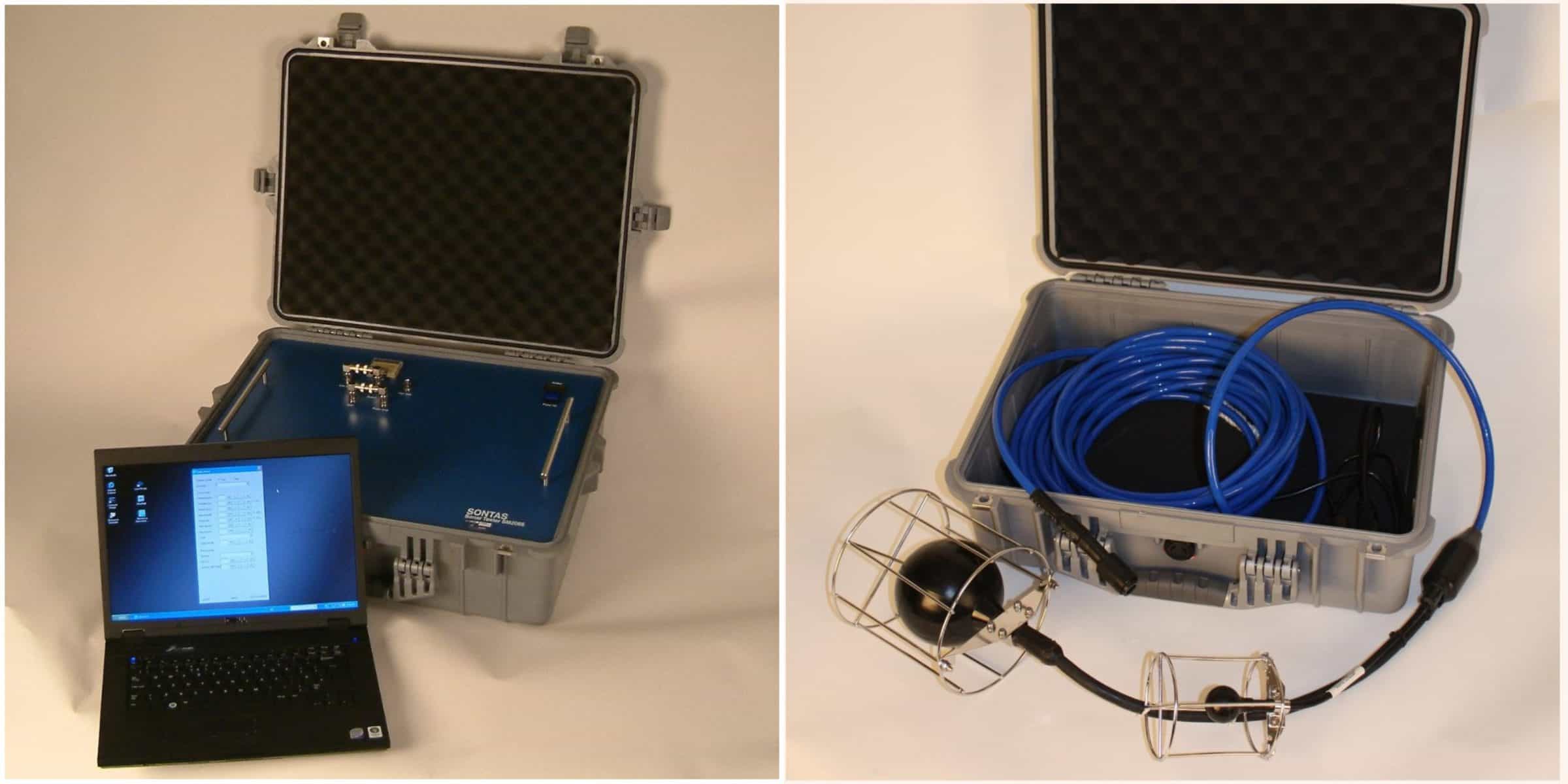Sonar Tester At Site, SONTAS, is a complete portable and battery powered system for calibrating and testing marine sonar. The system is easy to operate from a ship or during berth testing, and can even be operated from a small vessel, such as a RIB. The system consists of the following main parts:
- SONTAS Pelicase, which contains all the electronics needed to simulate underwater sonar targets.
- PC-based SONTAS control unit that communicates with the SONTAS Pelicase using an Ethernet LAN link.
Transducer unit, the standard version consists of a transmitting transducer and a receiving hydrophone combined in one device, but other transducers are available, for example with more transducers for the broadband frequency range.
The system can simulate signals for active and passive sonar testing, including an advanced echo repeater, as well as support for emitting acoustic sound or noise in the water.
The SONTAS Pelicase is the “heart” of the sonar tester, and it contains:
- Preamplifier
- Processor/DSP for the sonar target ( Sonar3 in new deliveries)
- Amplifier
- Giver
The unit is battery powered with a 110-230VAC charger inside. In normal use, the battery should supply SONTAS for 4-7 hours. All external connectors for sensor mounting, LAN and power (for charging) are waterproof when connected.
The frequency range depends on the configuration of the supplied sensor unit. For the SONTAS standard edition, the frequency range is 3 kHz to 50 kHz, but other lower or higher frequency range configurations are available on request.
The SONTAS-LF version supports as standard frequency range 300 Hz – 5 kHz. There is also a SONTAS-HF version which is aimed at high frequency sonar testing when the vessel is at berth. The SONTAS-HF has a higher sampling rate than the standard edition and a transducer unit that covers high frequencies, typically 60 kHz – 500 kHz, but other configurations are available on request.
Scanmatic can adapt SONTAS to the customer’s needs. Typical variations may include usable frequency range and lowest output source.
